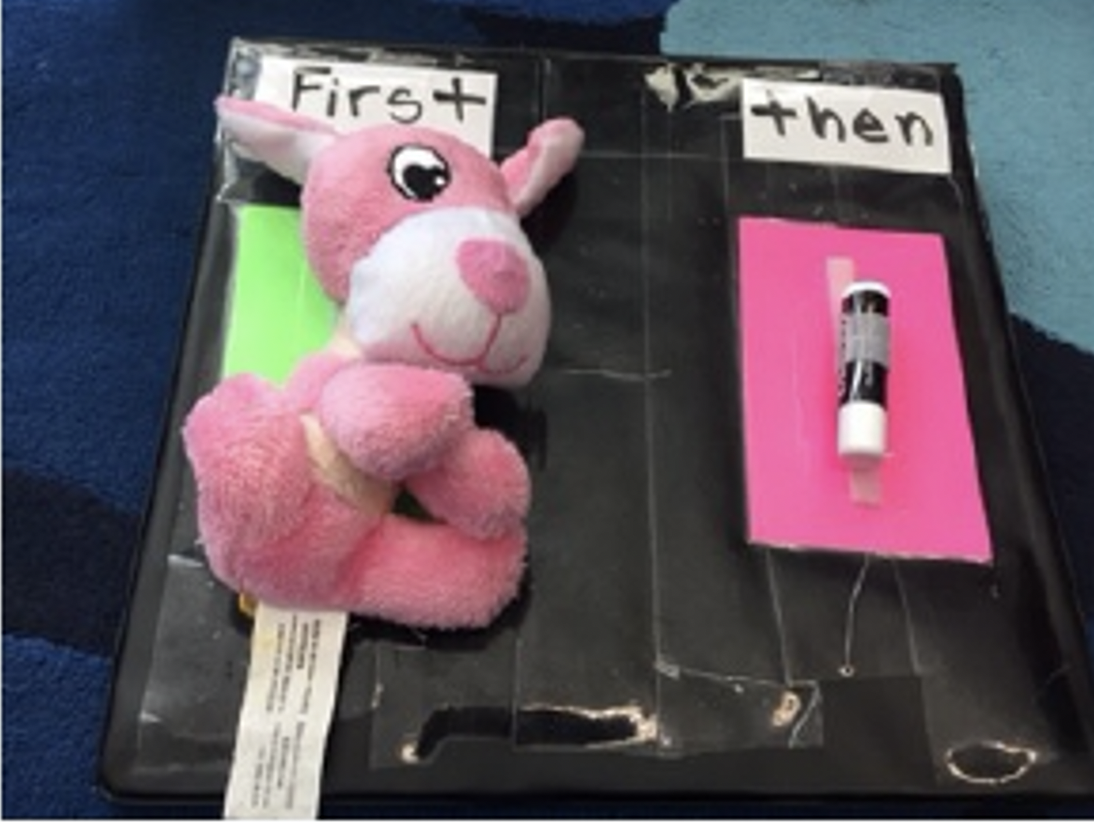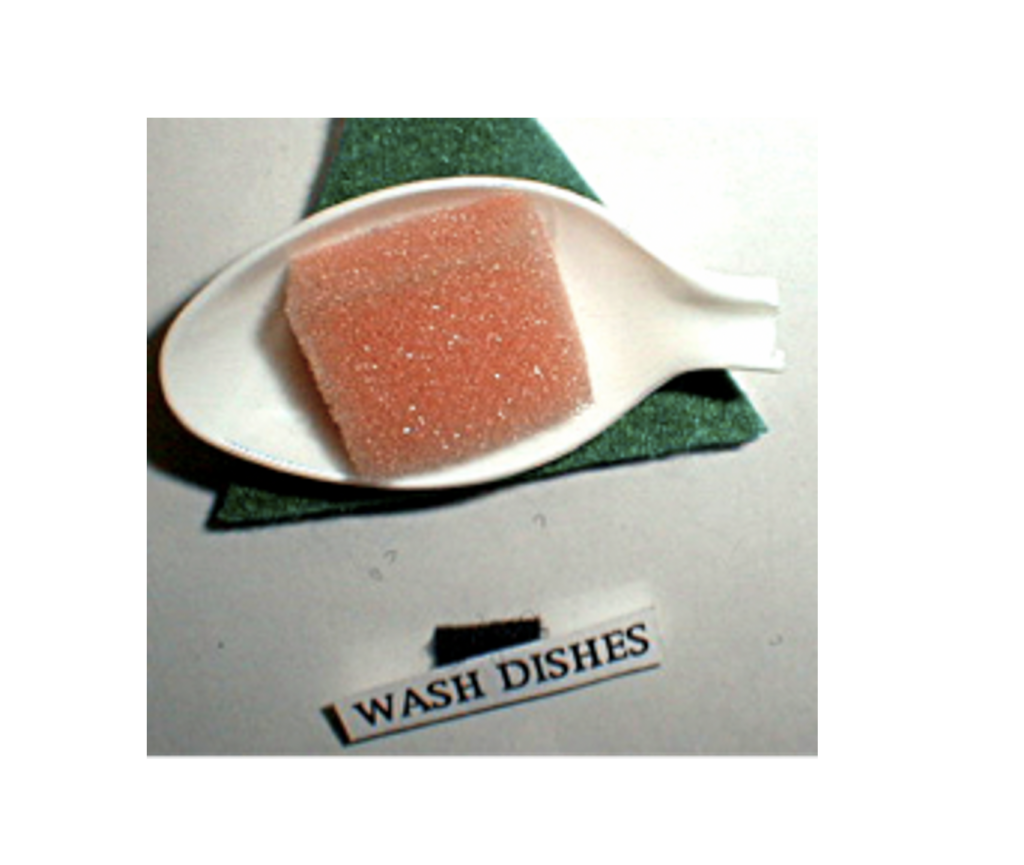First / Then Schedules can be used to help individuals understand what activity they are expected to be engaging in currently and what activity to anticipate next. They are a structured method of communicating about what is happening now and what is going to happen next. Alternating more preferred activities with less preferred, but required, activities may increase participation in the less preferred activity because the individual knows that they will soon access the preferred activity.
Characteristics of Individuals for Whom First / Then Schedules Might Be Appropriate:
- More concrete level of symbolic understanding (e.g., object symbols, photo symbols, line drawing symbols)
- Little or no experience using schedules and calendars
- Challenging behaviors
- Difficulty transitioning to new or non-preferred activities
- Limited verbal and/or conventional communication skills
- Identifies and/or differentiates between only one or two items presented at a time
Components of Setting Up a First / Then Schedule:
- List all activities in which the individual will participate during the period the schedule will be used. You might choose to use the schedule throughout the entire day or you might start by implementing a mini-schedule, which is a schedule for a shorter set time period or steps for a specific activity.
- Gather or create symbols for each activity or activity step to be used with the schedule. Symbols should match the symbol level of the individ-ual, as identified through symbol assessment. Mount symbols on durable cards.
- Use Velcro to affix symbols to the 2-position display, so that symbols can be removed and changed, as used.
The following are photograph examples of a possible sequence of activities using a first/then schedule. This example shows alternating work and break periods (pink stuffed animal is this child’s symbol for break). You might alternate a highly preferred task with a less preferred task.
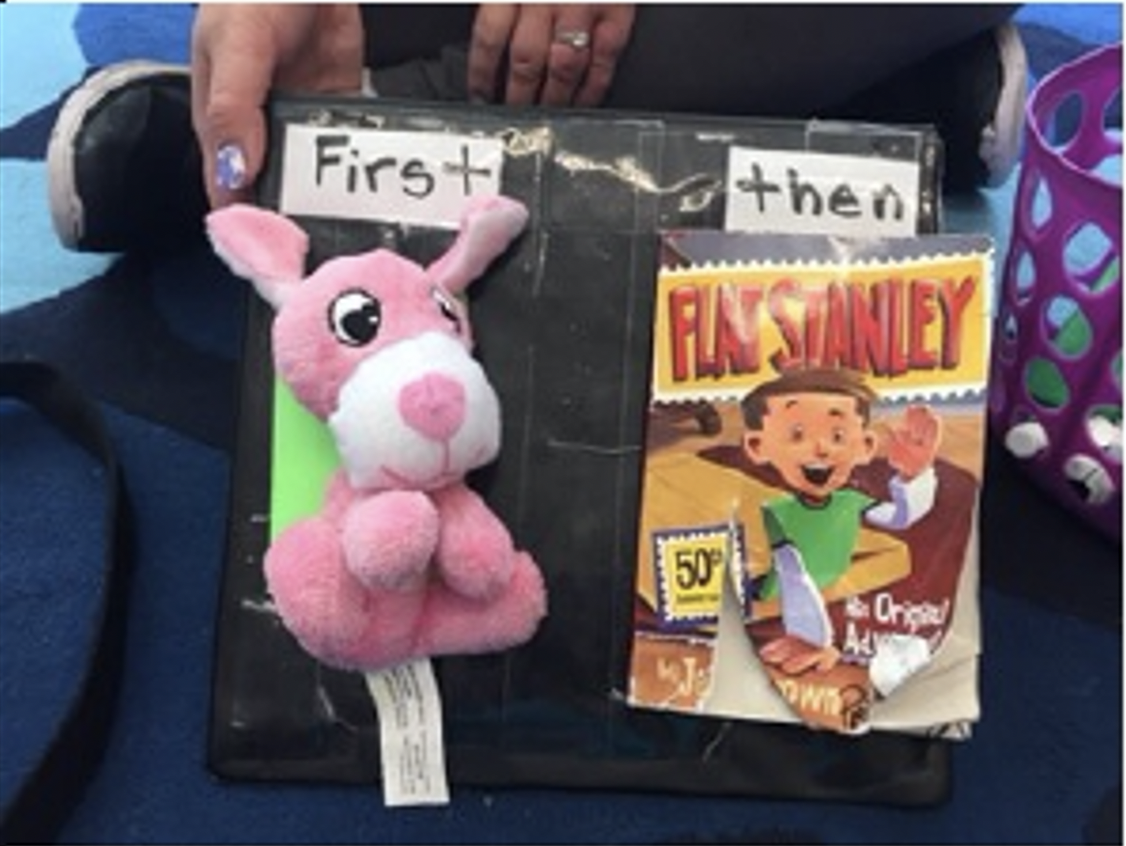
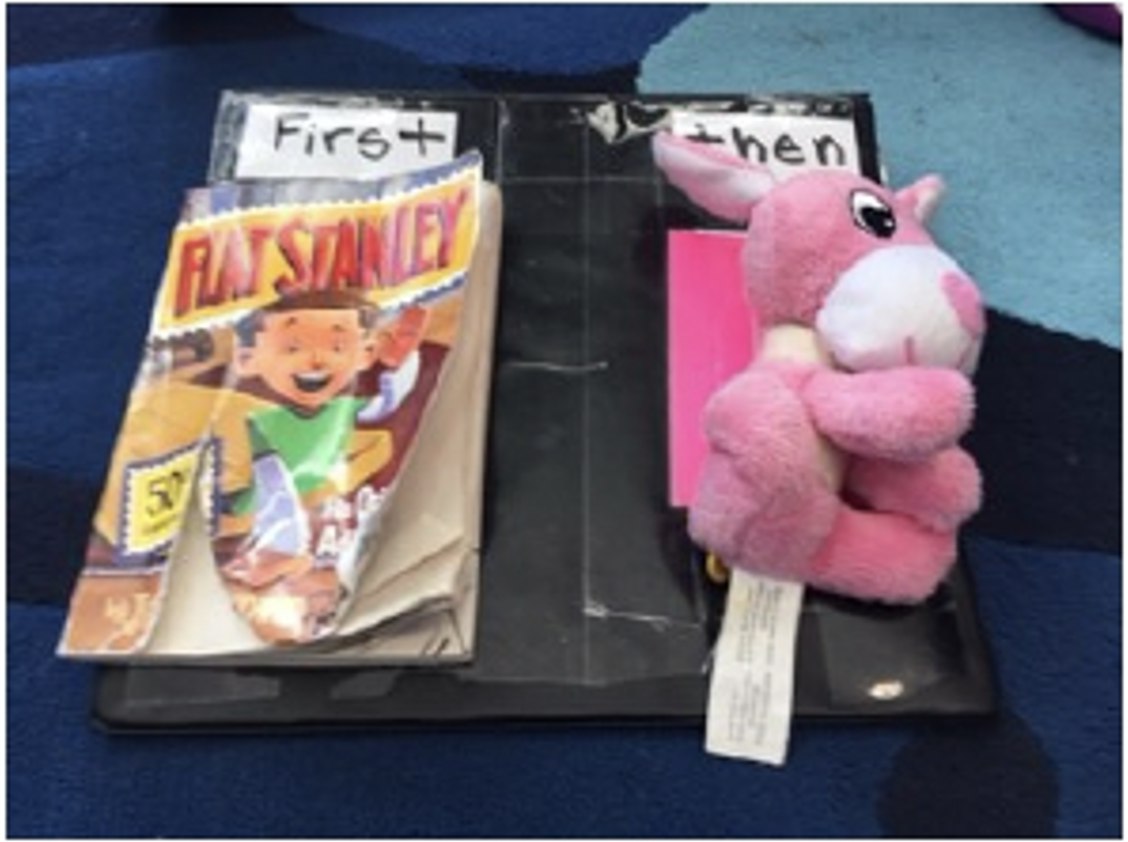
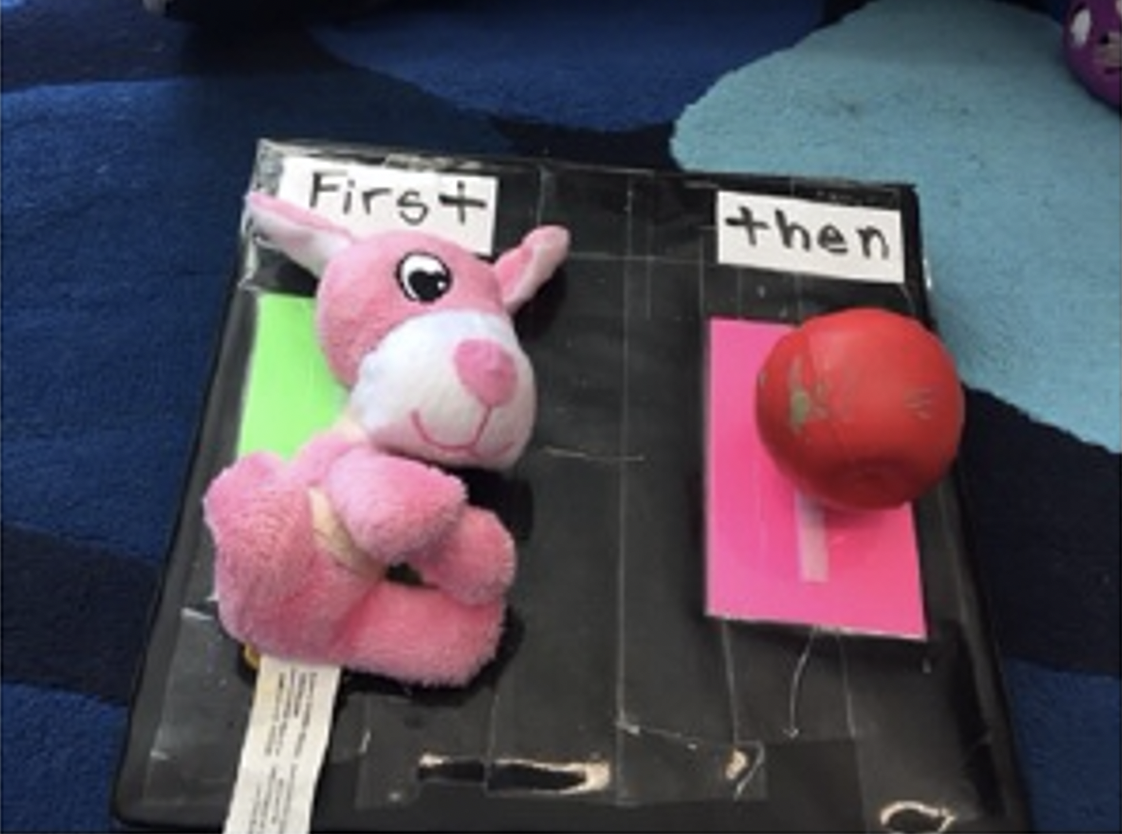
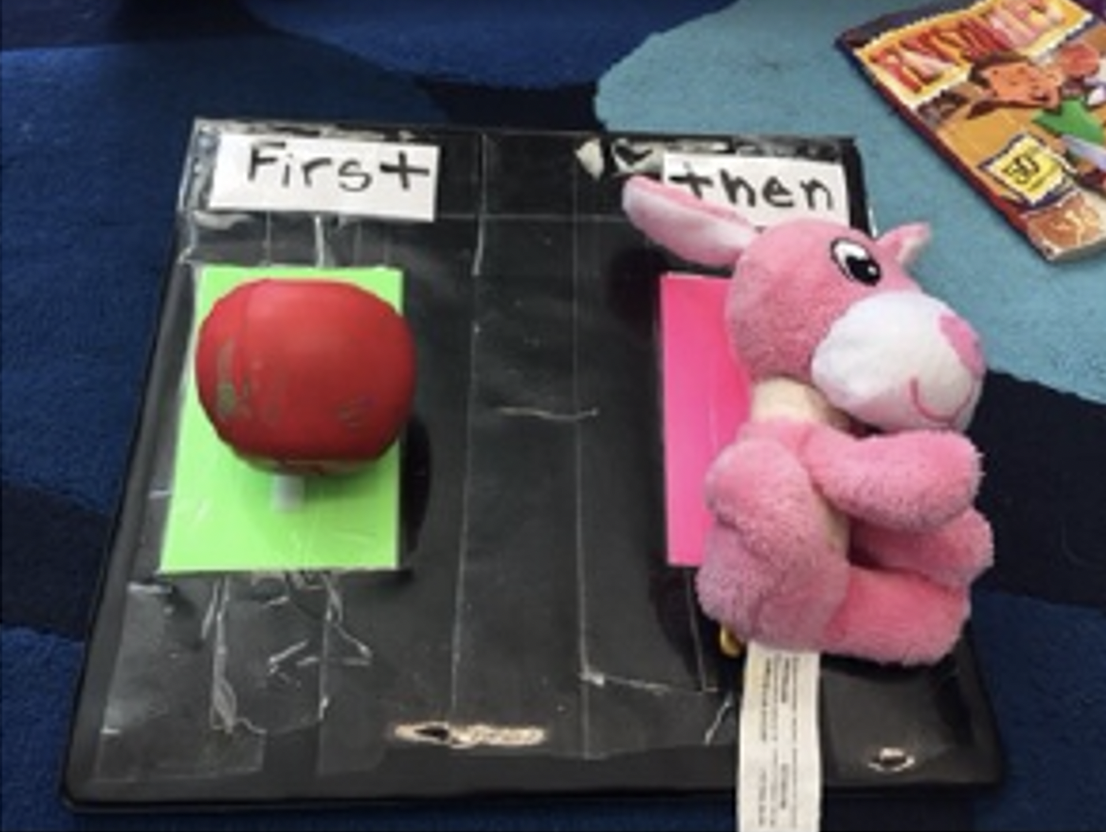
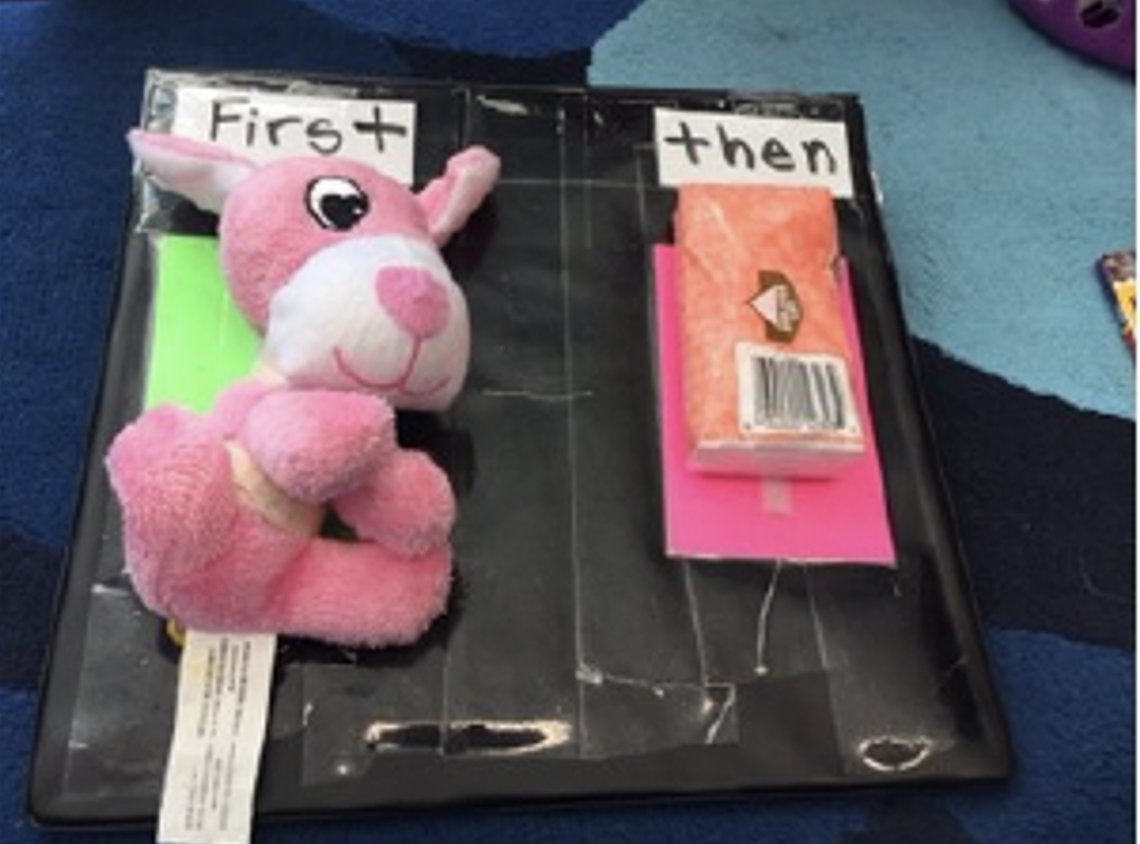
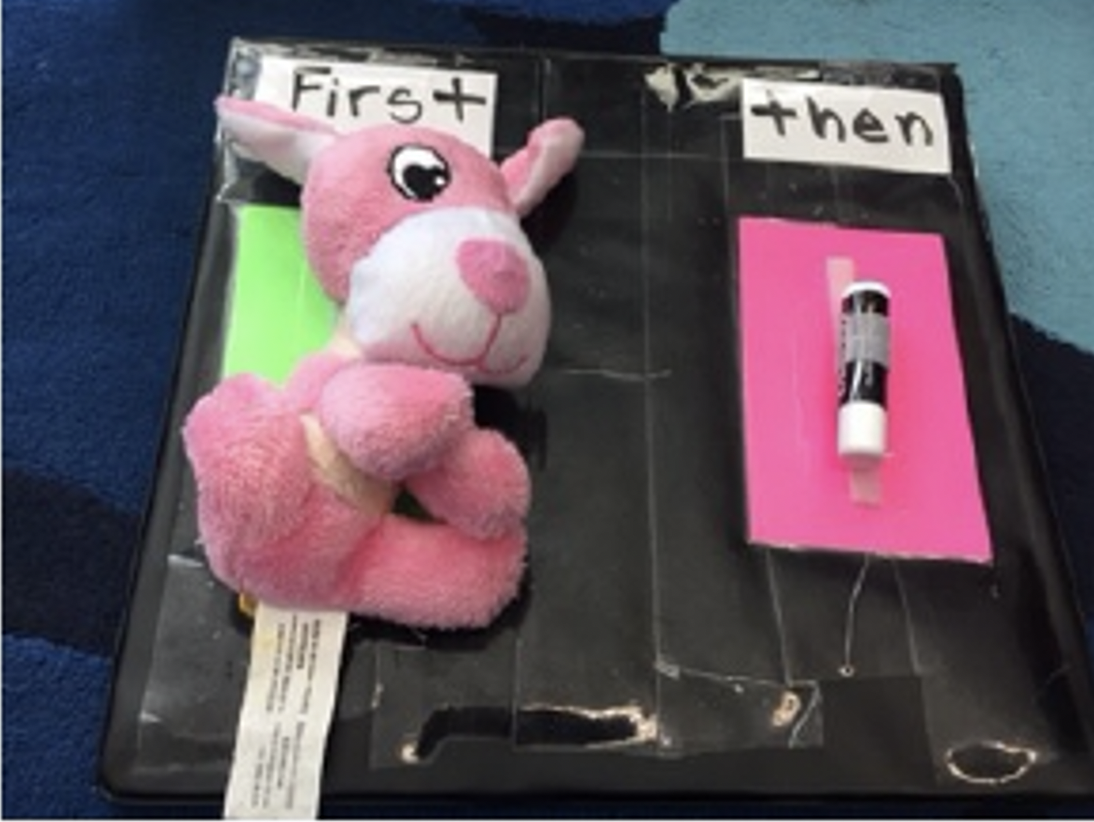
Using First / Then Schedules:
- Move left to right on the first/then schedule to be consistent with literacy skills. The current activity is listed in the “first” section on the left, while the upcoming activity is listed in the “then” section on the right. For example, a calculator representing math is placed in the “first” section to communicate that it is time to work on math. A pink stuffed animal is placed in the “then” section to represent a break on the bean bag will be the next activity.
- When an activity is completed, have the individual place the symbol for the activity in a designated “finished” container or pouch to increase receptive understanding that the activity is finished. Prompt as required.
- Have the individual move the symbol on the “then” section of the schedule (right) to the “first” section of the schedule (left). Add the symbol for the next activity or step to the “then” section (right).
- Have the child participate in the activity that is now “first.”
- Continue in this manner moving the symbols as you use the schedule and encourage child participation.
- Be consistent! Be sure to use the first/then schedule before and after each activity or activity step.
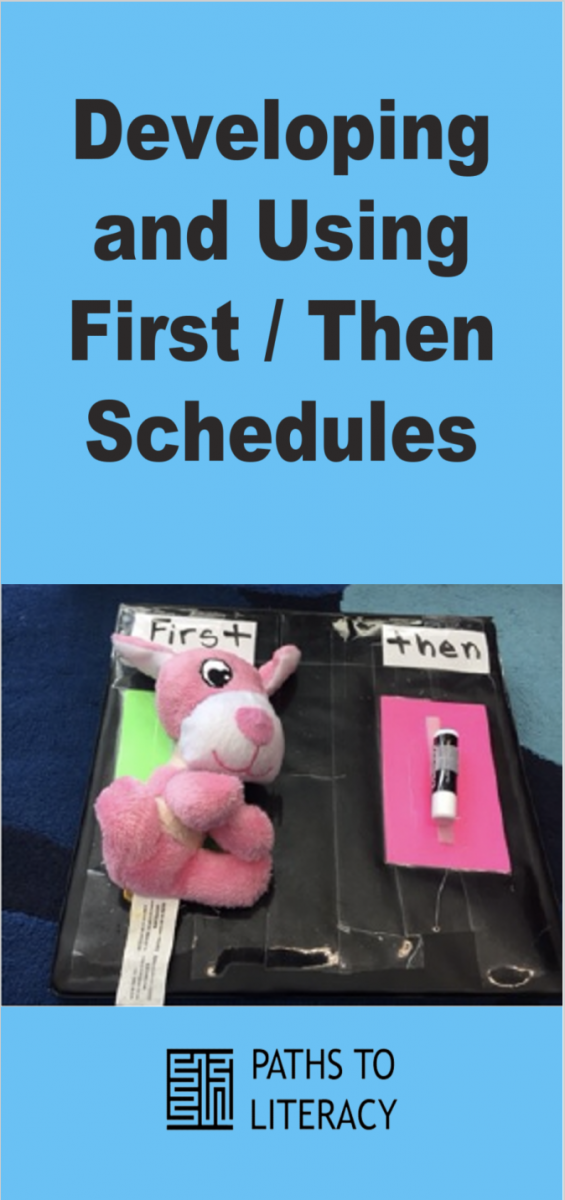
This article was reprinted with permission from the author. Visit the Nevada Dual Sensory Impairment Project for more tips and resources!

